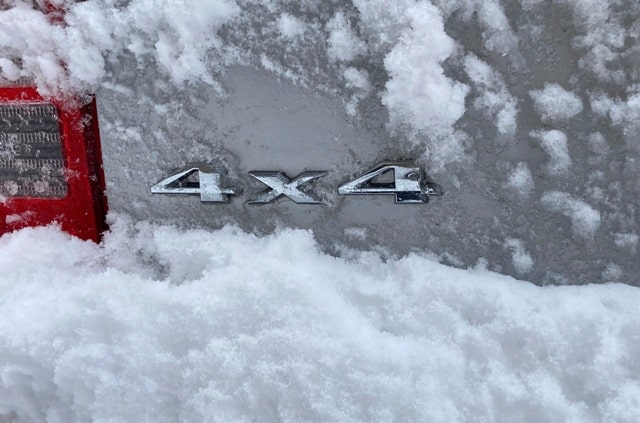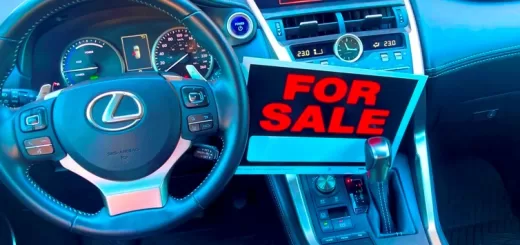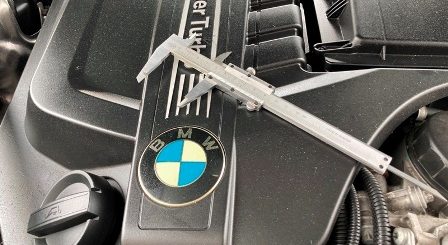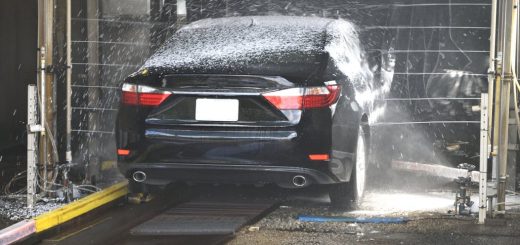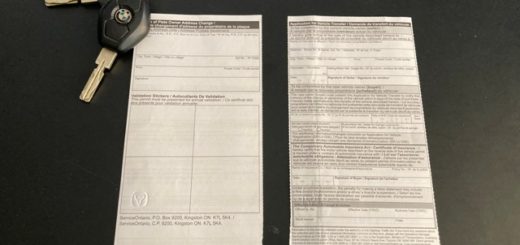Ontario Winter Driving Tips and Safety
Ontario Winter Driving: Most people don’t like winter, but Ontario and Canadian weather doesn’t really care what people like or not. So, winter it is for 6 months every year. Snow and ice makes driving a nightmare and we all have to face it every year. Preparing our cars and ourselves helps, it doesn’t turn winter into summer but at least you will be able to safely drive to work when snow decides it’s time to mess up everything.
Check Condition of Your Car
1) Tires
Most important aspect of safely driving is to stay on the road and do not end up on a ditch, more or less. Tires connect your car to pavement and tires alone will decide if your car will stay on the pavement. Traction is very important, and nothing beats winter tires for driving on snow or ice.
Check your winter tire thread depth and condition prior to winter, check tire pressure too while at it. If you don’t have winter tires then buy a set. All season tires are good for mild weather but won’t do much on snow and ice. Some provinces in Canada (BC and Quebec) even have laws which make winter tires obligatory in winter season.
2) Windshield Blades
As we said, it’s important to avoid a ditch and you need to see to avoid it. Wiper blades come in different types, from conventional wiper blades, to winter blades and beam wiper blades (Wiper Blade Types).
Whatever type you choose, make sure wiper blades are in good condition, otherwise replace them with new ones. Wiper blades are not expensive and you can replace them yourself, no big deal.
3) Washer Fluid
As with wiper blades, washer fluid come in different forms too (Washer Fluid Types). In Ontario you should use winter windshield washer fluid, something that can handle temperatures of -30 Celsius. Do not use water as replacement for washer fluid in Canada. Water will freeze and cause all kinds of problem on your windshield washer system. Fill up your washer fluid reservoir and keep a spare jar in your trunk, just in case.
(If you are also looking for a fast and easy solution to sell your car, more here on “How To Sell Your Car Fast” )
4) Service Your Car Before Winter
Cars nowadays do need “tune ups”. However, if you have any problems, check engine light, noises and maintenance items it’s better to finish them before winter start. Winter usually makes a small problem worse. A small problem in summer can turn into a big problem in winter very fast. Cold weather affects your car differently and differently means turning small problems into big problems. More here on Dashboard Trouble Lights Meaning.
5) Check Battery in Your Car
Winter kills batteries, simple as that. A weak battery which worked in fine summer, will give up the ghost when winter freezing temperatures start. Check voltage on battery in your car, it’s not hard and you can do it yourself: How to Test and Maintain Car Battery.
If you have doubts about battery condition or your battery is older than 5 years, then replace it. Do not wait until you get stuck somewhere or find it dead one morning when you have to go to work. Check battery terminal connections, clean them up with water and brush if needed.
6) Survival/Emergency Kit
It’s always prudent to have an emergency kit in your car, you never know. In most countries in Europe, emergency kits are obligatory and should be kept in the car all the time. Emergency kits do not cost much and you have to buy it only once.
Kits usually include: Flashlight and batteries, jump cables, medical emergency kit, road flares, blanket, matches, candles, tow line and folding snow shovel. Keep winter warm clothes, gloves and hat in your car at all times in winter. If you get stuck somewhere it will come handy.
7) Check Fluids
Check and top us as necessary engine oil, engine coolant and brake fluid. You can do this yourself or it can be done if you send your car for winter service. Do not top up engine coolant with water, water will dilute antifreeze in coolant and can cause coolant to freeze. Use only engine coolant to top up, consult your owner manual for coolant type on your car.
8) Consider a Block Heater
Freezing temperatures thickens oil in your engine, kill your battery and can damage engine in cold start ups. If you live in colder parts of Canada, a block heater will help keeping fluids in your engine warm overnight (oil and coolant). Block heaters also protect your battery from discharging overnight and make it easier to start your car in the morning when temperatures drop under -20 Celsius. What is an Engine Block Heater.
Winter Driving Safety Tips
- Slow Down
Drive slow or slower than usual if roads are covered with snow, ice or water. Check road condition and drive based on your abilities to control your car. Do not rush and do not be rushed by cars behind you. Most important thing is to arrive at your destination safe and sound, won’t make a difference if you arrive few minutes later.
- Do not be Fooled by AWD
AWD drive systems are good at creating more traction with all wheels active. However, AWD is better than FWD/RWD only on acceleration and handling. AWD makes zero impact when it comes to braking. When braking, an AWD vehicle will behave the same as FWD or RWD vehicle.
Do not be overconfident because you drive an AWD vehicle, always drive according to road conditions. Tires and road condition will decide when and how you stop, not your drive-train type.
- Keep Your Distance
Keep a longer safety distance from cars in front of you. Winter weather lengthens braking distance and a longer safety distance need to be kept between cars. Also, if hydroplaning happens you have time to react and avoid a collision (What is Hydroplaning). Skidding in ice or snow is another risk which can be reduced with slower speeds and long safety distances.
- Use Cruise Control Sparingly In Winter
Do not use cruise control when weather does not permit. Use cruise control only on fair weather and optimal road conditions. If something happens, cruise control will lose you a second or two and that might be time you don’t have if you lose control of your car.
Also, you don’t feel your car’s handling when in cruise control, as you are not driving but monitoring. Keep full control at all times when in bad weather and do not use cruise control. Check owner manual for instruction on when and how to use it.
- Use Your Lights
In Canada, low intensity daytime running lights should on all the time, it’s the law and is obligatory. However, in adverse weather conditions daytime lights might not be enough. Turn on full driving lights on your car when driving in snow or fog to ensure other drivers see you. Turn on your fog lights too if your car is has them, will help making your presence as visible as possible.
- Sliding
Sliding or skidding is a normal occurrence when driving in snow or ice. Doesn’t matter how experienced a driver can be, sliding can happen to anyone. Crucial difference is how to react and regain control. Test the road while driving, feel the car what it is doing to get an idea about your braking distance.
Avoid forceful braking, instead roll to a stop slowly. Abrupt braking will cause your car to slide if one or more wheels lose grip. If your vehicle slides, remove your foot from accelerator. Do not apply forced braking as you will make things worse. Use steering wheel to steer vehicle opposite to sliding direction while applying very light braking to reduce vehicle speed.
- Visibility In Adverse Conditions
Visibility when driving in bad weather is paramount. Prior to driving in the morning, clean snow and ice form your car. Do not just clean your windshield and call it a day. Clean all windows, you need to check blind spot and also see what’s behind you. Clean mirrors from ice and use heated mirrors function if your car has that equipment.
Knowing position of cars around you while driving helps if you need to make abrupt maneuvers to avoid a collision or if your car slides. Clean roof too while at it. At high speeds, snow or ice will fly of the roof and endangers drivers behind you. Ice will turn into a bullet at highway speeds.
- Check Weather Prior to Driving in Ontario
This is easy, there are about 100 weather apps to check Ontario winter weather in advance prior to driving, as much as weather can be predicted that is. Pick one and use it before driving, at least you will know what to expect. Also, check weather at night on what next morning will bring. If you have to drive to work, you will need to wake up early to clean your car during snowfalls, driveway too.
- Keep Fuel Tank Full
Don’t have to keep your gas tank full all the time, no need to get paranoid but at least do not leave your fuel tank go lower than 50%. You never know, snow or ice storms might cause problems with fuel supply, electricity interruptions or you will need it if you get stuck somewhere.
Traffic will be heavier and accidents will be common in bad weather. You might get stuck in bumper to bumper traffic or road blockages from accidents. Having enough fuel at least will give you some piece of mind when biting your nails stuck in traffic for hours.
- Snowplows
Snowplows are common on Ontario roads and highways during snow falls. Do not pass a snowplow, its risky to say the least. Although it is not illegal to pass a snow plow in Ontario, passing can turn into a dangerous event very fast.
Large plow blades combined with low visibility and slippery conditions are a recipe for collision, endangering everyone’s life. Keep a safe distance and follow until is safe to proceed or snowplow pulls over or stops. Let them do their work and be patient.
More Winter Driving Tips from Ontario.ca.
(If you are also looking for a fast and easy solution to sell your car, more here on “How To Sell Your Car Fast” )
Comments: If you have any questions or suggestions related to this post or Used Car Toronto in general, don’t hesitate to use comment section below.




